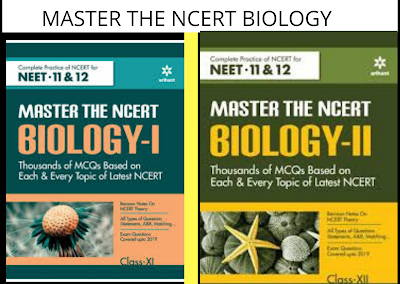NCERT Line by Line Question: Plant kingdom Class 11. Study Class 11 Biology NCERT Chapter 3 with our detailed ncert line by line questions, answers, and explanations. Prepare for NEET with our Plant kingdom questions and NCERT solutions. Ace the living world exam!
Ncert line-by-line questions for Class 11 Biology NCERT Chapter 3 " Plant kingdom." Designed to aid in Neet preparation, these questions provide a thorough understanding of the concepts discussed in the chapter.NCERT Line by Line Question: Plant kingdom Class 11. Study Class 11 Biology NCERT Chapter 3 with our detailed ncert line by line questions, answers, and explanations. Prepare for NEET with our Plant kingdom questions and NCERT solutions. Ace the living world exam!" Covering topics all topics of Plant kingdom this page is a valuable resource for anyone studying biology in Class 11. Whether preparing for NEET or just want to brush up on your knowledge, this page offers a comprehensive approach to studying the Plant kingdom. Use these questions to test your understanding, improve your score, and master the subject matter. Get a strong foundation in the living world with this NCERT line-by-line question resource.
Ncert line-by-line Plant kingdom designed such a way that we ensure to cover all topics from ncert class 11 Plant kingdom biology. ncert line-by-line questions covering all previous year questions and important topics.
1 ) Whittaker proposed 5 kingdom classification in year ______
2) The earlier systems of classification used only ____________characters such as _____, _____,
________ etc.
3) Earlier system was based mainly on __________ or on _________ given by Linnaeus.
4) Earlier system given by Linnaeus were natural/artificial because
5) Artificial system gave equal weightage to ________ and ________.
6) Sexual characters and more easily influenced by environment then vegetative characteristics. T/F
7) Natural system also consider internal features like -
8) Natural classification was given by ________ and _________.
9) Natural system was based on __________ among the organism.
10) At present, natural system of classification is accepted. T/F
11) Classification based on evolutionary relationship is ______
12) __________ taxonomy is carried out using computers.
13) Hundreds of characters can be considered at the same time in _________
14) Cytotaxonomy is based on - (3)
15) _________ uses chemical constituents of plants to resolve confusion.
• ALGAE
16) Algae are ___________ in structure.
17) Algae are not found in marine environment. T/F
18) Example of animal associating with algae –
19) Colonial form of algae example (1)
20) Filamentous form example (2)
21) Marine form ex (1)
22) Algae don't reproduce by sexual method. T/F
23) Vegetative reproduction in algae is by _________
24) Most common asexual spore of algae is ________
25) Zoospores are ciliated. T/F
26) Flagellated isogametes for sexual reproduction found in (1)
27) Non flagellated isogametes are found in (1)
28) Example of anisogamous conditions (1)
29) Ex. Of oogamous condition (2)
37) At least _____% of total CO2 on earth is fixed by algae.
38) However they are not able to increase the level of dissolved oxygen
in their surroundings, instead they increase the BOD. T/F
39) They produce energy rich compounds. T/F
eg. _______ & ________.
42) Algin and carrageen are produced by _______ and
_________ algae respectively.
40) There are ____ species of marine algae used as food, examples are (3)
41) Certain marine/fresh water______ and _____ algae produce ________(water holding substance) eg ________ and _______
42) Algin and carrageen are produced by _______ and
_________ algae respectively.
43) Agar is obtained from ________ &_______ is used to grow _______ and in preparation of
_______ & _________
44) Chlorella is multicellular. T/F
45) Chlorella is rich in ________ used by space travelers.
• CHLOROPHYCEAE
46) Commonly called __________
47) Plant body maybe of 3 forms. Name them.
48) They have dominance which two pigment ?
49) Chloroplast in green algae can't be ribbon shaped. T/F
50) Shapes of chloroplast in green algae (5)
51) Storage body located in chloroplasts are called ________
52) Pyrenoids don't contain protein. T/F
53) Green algae cell wall is made of inner layer of ______ and outer layer of _______
54) Vegetative rep take place by ______ or _______
55) Asexual reproduction take place by non flagellated spores. T/F
56) Green algae are only isogamous and anisogamous in nature. T/F
57) Examples (5)
• PHAEOPHYCEAE
58) Phaeophyceae are found particularly in marine habitat. T/F
59) Filamentous form found in (1)
60) Profusely branched forma are _____ which may reach height of _____ m.
61) Pigments present (4)
62) Brown algae can be olive green. T/F
63) The colour vary from olive green to brown depending upon the amount of __________, which is a
type of _________pigment.
64) Food is stored in the form of ______ or _______.
65) The vegetative cells have a ________ wall covered from outside by ______
66) The plant body is attached to substratum by ________ and has a stalk called _______
67) Leaf like photosynthetic organ called _________
68) Vegetative rep by ________
69) Asexual rep by uni/biflagellate __________ which are _____ shaped.
70) Here zoospores have one/two, equal/unequal and medially/laterally attached flagella.
71) Gametes are ________ shaped and bear one/two cilla/flagella medially/laterally attached.
72) Example (5)
• RHODOPHYCEAE
73) Red due to presence of pigment _______
74) Majority are fresh water. T/F
75) They are found mostly in great depths of oceans and not at lighted areas. T/F
76) Food is stored as ___________ which is similar to ________ and __________ in structure.
77) Vegetative rep by ________
78) They reproduce asexually by biflagellate zoospores. T/F
79) Sexually by non-motile gametes. T/F
80) In _________, there are complex post fertilisation events.
81) Sexual rep in red algae may be isogamous, anisogamous or oogamous. T/F
82) Examples (4)
BRYOPHYTES
88) These plants are dependent on _________ for sexual reproduction.
89) They usually occur in well-lit areas. T/F
90) They play important role in _____ on bare rocks/soils.
91) They are attached to substratum by _________
92) Rhizoids may be unicellular or multicellular. T/F
93) Bryophytes have true root, stem and leaves. T/F
94) The main plant body of bryophytes is called _________
95) The male sex organ of bryophytes is called ________ and produce uni/biflagellate antherozoids.
96) The female sex organ is _________ shaped and is called __________
97) Bryophytes are of great economic importance. T/F
98) Peat is provided by __________ which is a moss/liverwort.
99) Peat is used for trans-shipment of non-living materials because of their capacity to hold water. T/F
100) First organism to colonise rocks are ________ and __________.
101) Bryophytes are of great ecological importance. T/F
102) Mosses prevent soil erosion. T/F
• LIVERWORTS
103) Plant body of liverwort is ______ structure.
104) The thallus is dorsiventral/isobilateral.
105) Asexual rep takes place by _______ or by specialised structure called ________
106) Gemmae are green/white, uni/multicellular, asexual/sexual buds which develop in small receptacles
called __________
107) The sporophyte is differentiated into 3 parts. Name them.
108) Spores are produced in the __________
• MOSSES
109) Gametophyte consist of two stages, first stage is ______ and second is _______
110) Features of protonema stage (4)
111) Leafy stage develops from primary/secondary protonema as a medial/lateral bud.
112) Leafy stage has _______ arranged leaves.
113) They are attached to soil through uni/multicellular and unbranched/branched rhizoids.
114) Protonema stage bears sex organs. T/F
115) Vegetative rep by __________ and _________
116) Antheridia and archegonia are produced at the base of the leafy shoot. T/F
117) The sporophyte in liverworts is more elaborate than moss. T/F
118) _________ have elaborate mechanism of spore dispersal.
119) Examples (3) • PTERIDOPHYTES
120) Pteridophyta include ______ & _______
121) Pteridophytes are used in medicinal purpose. T/F
122) Pteridophytes are used as soli binders. T/F
123) First terrestrial plants to possess vascular bundles is
124) Pteridophytes flourish in well lighted conditions. T/F
125) Pteridophytes have true root, stem and leaves. T/F
126) Example of species possessing microphylls (1)
127) Example of species possessing macrophylls (1)
128) Leaf like appendages are called
129) Strobili also called _______ are present in (2)
130) Spores give rise to conspicuous/inconspicuous, unicellular/multicelluar, thalloid gametophyte called
_______
131) They need _______ for fertilisation, hence they are restricted to narrow geographical regions.
(NEET)
132) They have antheridia and archegonia. T/F
133) Example of heterosporus plants. (3)
134) The female gametophyte is retained on the parent sporophyte for variable periods. T/F
135) The development of zygote to young embryos take place in ________ (NEET)
136) This event is precursor of _________ (NEET)
137) Classes and their examples
138) Identify the diagram and labellings.
GYMNOSPERMS
142) "Gymnosperms" means _________
143) Ovules are not enclosed in a ________
144) In gymno, ovules remains exposed even after fertilisation. T/F
145) ______ is also called the giant redwood tree. (NEET)
146) Gymnosperms have generally ______ roots.
147) Mycorrhiza is found in ______
148) In Cycas, _______ roots are found in association with ________ (NEET)
149) Unbranched stem found in (1)
150) Branched stem found in (2)
151) In cycas, ________ types of leaves persist for few years. (NEET)
152) The leaves of gymnosperms are well adapted to withstand extreme temperature, humidity and wind.
T/F (NEET)
153) In conifers, needle like leaves are present. T/F
154) Water loss is further prevented by _________ and _________
155) The gymnosperms are both hetero and homosporous. T/F (NEET)
156) Sporophylls are arranged spirally. T/F
157) Sporophylls form ______ or ________, ______
158) Male strobili is also called ______ and bear ______ and ______
159) Megasporangia also called ________
160) Female strobili also called ________
161) Pinus is monoecious. T/F (NEET)
162) Cycas is monoecious. T/F (NEET)
163) MMC is differentiated from ______
164) Nucellus + Envelope which protect it =
165) MMC divided mitotically/meiotically.
166) Ovules are born on ________
167) Female gametophyte is retained within megasporangium. T/F
168) In _________, male and female gametophyte don't have independent existence. T/F
ANGIOSPERMS
172) Smallest plant in the world –
173) Largest plant in the world –
174) Largest Angiosperm –
175) Stamen consists of two parts. Name them.
176) Tetra or pentamerous flowers are found in ________
177) Female sex organ in a flower is _______
178) Pistil divided into (3)
179) ______ event is unique to angiosperms.
LIFE CYCLE AND ALTERNATION OF GENERATION
180) Haplontic life cycle ex (3)
181) Diplontic life cycle ex (3)
182) Haplo-diplontic ex (5)


















